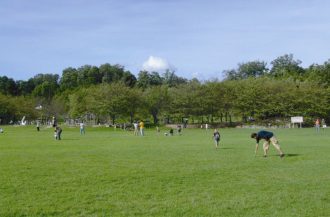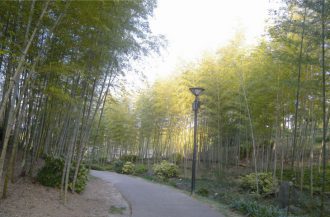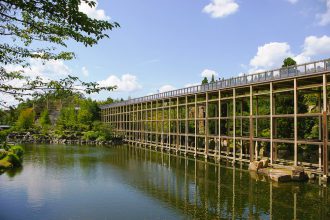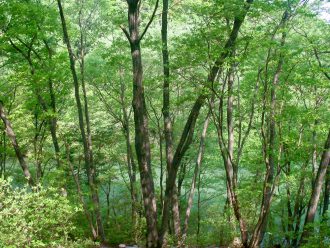
Overview
Keihanna Commemorative Park was created to commemorate the construction of Keihanna Science City. It opened to the public in April 1995 as a park belonging to Kyoto Prefecture. The total area of the park covers 24.1 hectares.
Themes
Landscape, Nature, and Culture
Keihanna’s formal name is “Kyoto Prefectural Kansai Culture and Science City Commemorative Park.” The park was created as the commemorative park for a city whose name includes the word “culture.” It also commemorates the 1200th anniversary of the Japanese capital’s founding in Kyoto (then known as Heian-kyo). The park is thus an expression of Japan’s culture, nature, and traditional landscape.
Nature
Keihanna Science City’s aim to realize a society in harmony with nature. As its commemorative park, we are preserving the the mountain landscape of a traditional Japanese village, with all its connections to agriculture and forestry, an environment that covers 15.1 hectares of the park and working on revitalization of Satoyama environment in other parts of Japan. Satoyama refers to a village near the vicinity of a mountain where human-influenced ecosystem exists in a sustainable way.
Exchange
As Keihanna Science City’s communication center, Keihanna Commemorative Park offers visitors a place for relaxation, recreation, and discovery. We receive over 600,000 visitors a year.
Four Zones
Keihanna Commemorative Park is divided into a Fee Area and a Free Area.
Free Area
Taniai (Valley)
The taniai (or valley) expresses the mountain landscape of a Japanese mountain village. It features a small stream, a path through a bamboo grove, and a plum garden. Thanks to these scenes celebrating Japan’s original landscape, the Taniai is a popular relaxation space among visitors.
Fee Area
Suikei-en (Japanese Garden)
Suikei-en (meaning “waterscape garden”) is designed as a strolling pond garden meant to be enjoyed by the public. Visitors of all ages can enjoy the dynamic arrangement of rocks, the water cascades, seasonal colors, and feeding carp in the pond. All areas of the garden can be enjoyed during a 20-30 minute walk.
Mebuki-no-Mori (Budding Tree Forest)
Mebuki-no-Mori is a forest in the pastoral mountain landscape surrounding Nagatani Pond. Visitors can walk in the forest and enjoy natural scenes like blooming azaleas in spring, sunshine streaming through leaves in summer, colored maple leaves in autumn, and waterfowl in winter. It takes about one hour to walk through both Suikei-en and Mebuki-no-Mori.
Park Icon
![]() The moon was adopted as an icon symboling the park’s theme of celebrating Japanese culture and nature. A variety of moon-related events, such as Moon-Viewing Night, are held on various occasions. night” is held on various occasions.
The moon was adopted as an icon symboling the park’s theme of celebrating Japanese culture and nature. A variety of moon-related events, such as Moon-Viewing Night, are held on various occasions. night” is held on various occasions.














